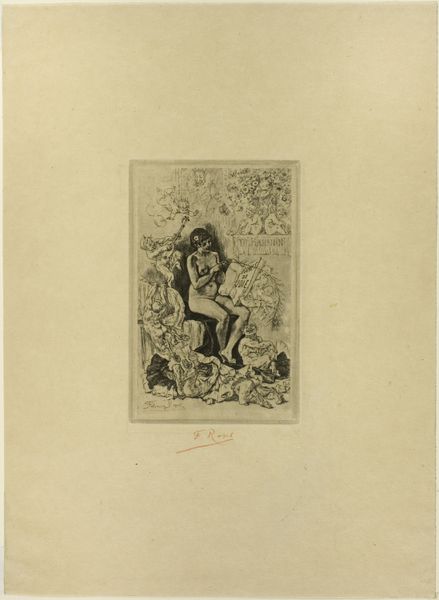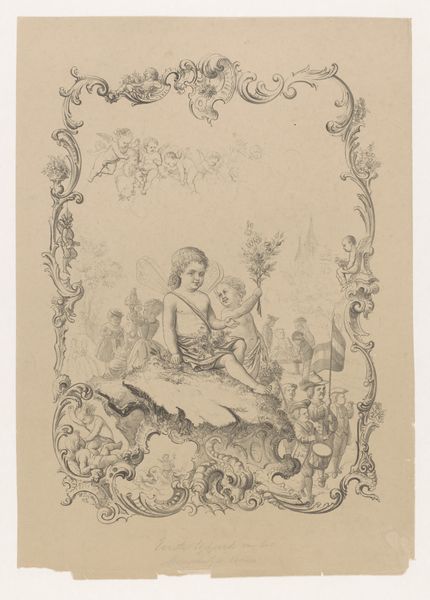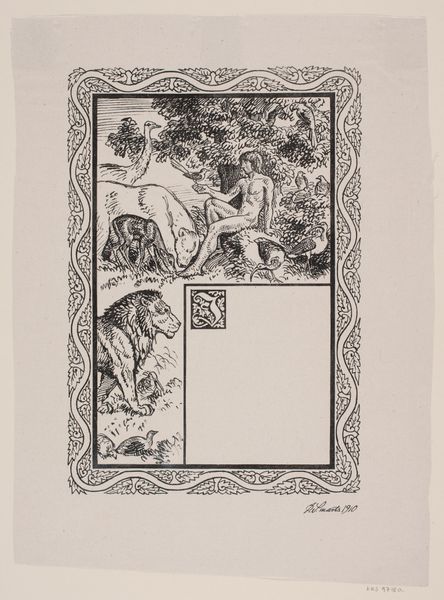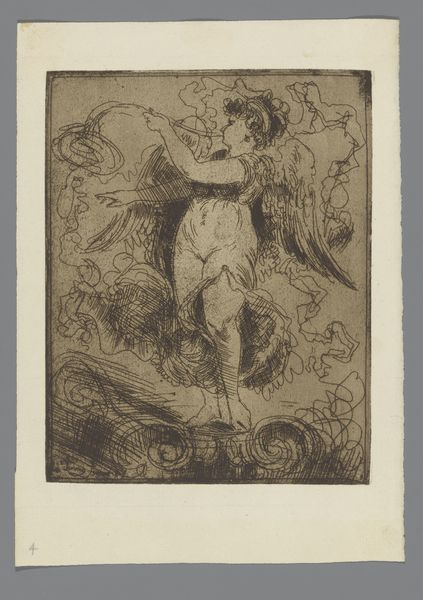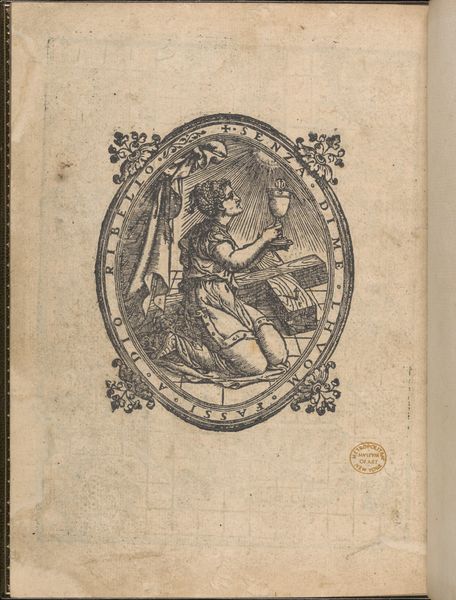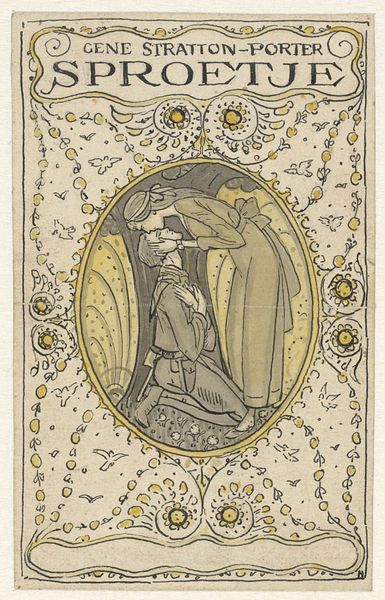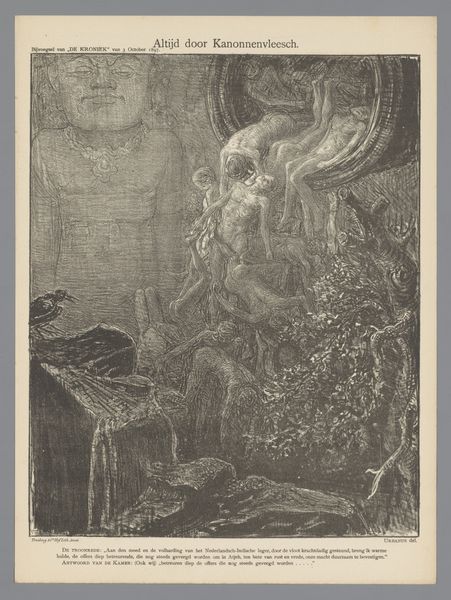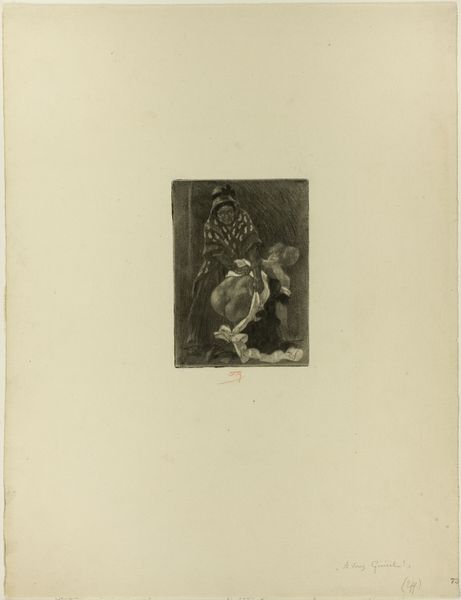
drawing, ink
#
portrait
#
drawing
#
art-nouveau
#
pen drawing
#
ink
#
geometric
#
decorative-art
Dimensions: height 400 mm, width 250 mm
Copyright: Rijks Museum: Open Domain
Curator: This pen and ink drawing is Nicolaas van de Vecht's "Kalenderschild voor een kalender voor 1919," created in 1918. The drawing shows a figure nestled within an elaborate Art Nouveau frame. Editor: Ah, it has this sort of drowsy, languid feel to it, doesn't it? The swirling lines, the soft shading, almost dreamlike. Like catching someone in a very stylish doze. Curator: The decorative art context is critical here. We should note how Art Nouveau emerged during periods of rapid industrialization. It offered an alternative vision emphasizing organic forms, craftsmanship, and an idealized pre-industrial past. Van de Vecht’s piece taps into this vein by creating a unique decorative form with clear links to calendar production of the period. Editor: It’s interesting, isn't it, the calendar’s purpose as something practical, tied to time and schedules, made beautiful, but also oddly timeless? Look at how the floral motifs wrap around the figure—is that an angel, or just an arm covered by drapery—it makes the person melt into the environment. Curator: This intertwining highlights the movement's emphasis on integrating art into daily life, but I think a deeper read sees a longing for an artistic space free from the constraints of purely functional industrial design and where pre-industrial motifs can gain relevance in an industrialized age. Editor: You’re right. Thinking of its function, it makes me wonder what someone would write in that empty space down below—a to-do list? Poetry? "Get through 1919"? Imagine starting the new year with that image staring back at you… Did they feel it captured the mood of the moment, that transition towards something different? Curator: Precisely! It’s a liminal space. The placement of the figure between dream and industrial, between pre and post-war offers multiple interpretations. Considering it came about after years of socio-political turmoil caused by the First World War it makes one consider its ability to transcend as well as contextualize the political and societal narratives prevalent at that time. Editor: Yeah. Now I’m seeing that quiet strength, a little bit of hope maybe? And it's still so lovely and intriguing even today.
Comments
No comments
Be the first to comment and join the conversation on the ultimate creative platform.
